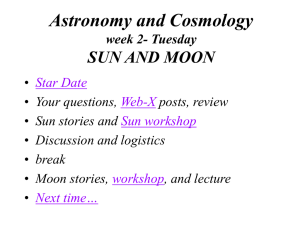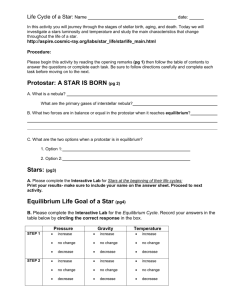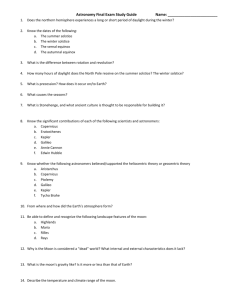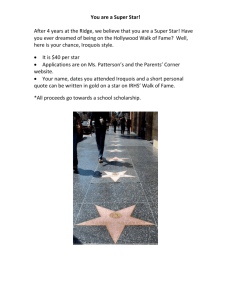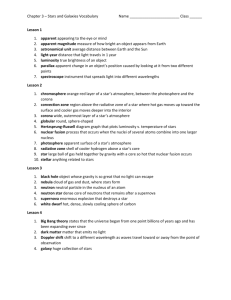9 Weeks Study Guide Answers
advertisement
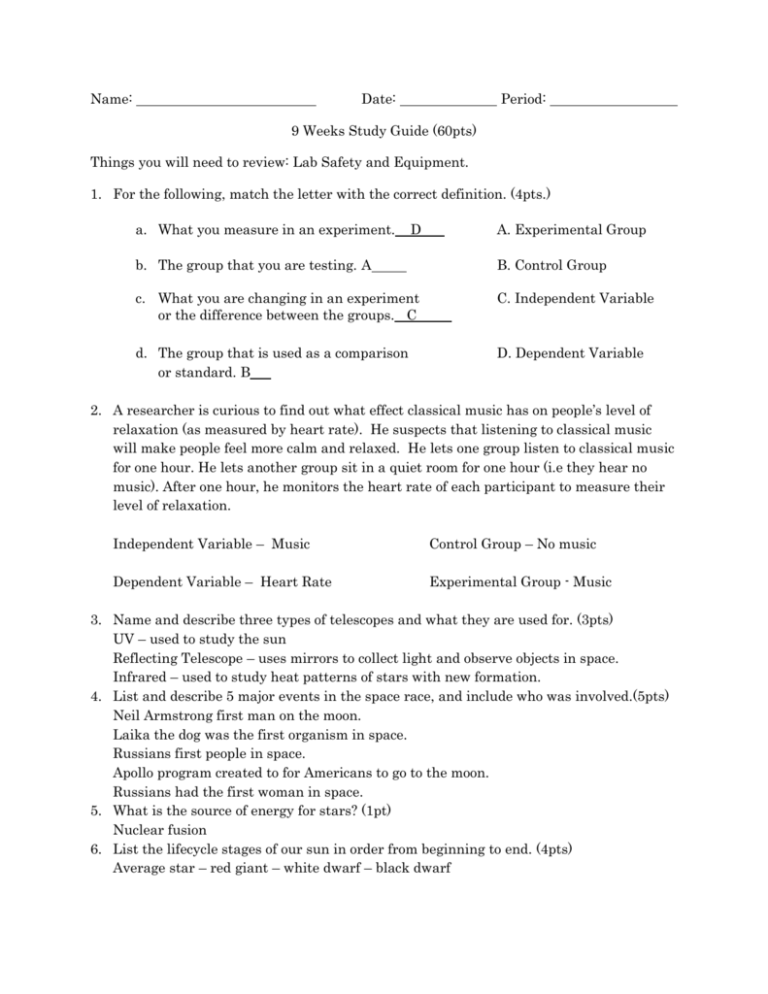
Name: Date: Period: 9 Weeks Study Guide (60pts) Things you will need to review: Lab Safety and Equipment. 1. For the following, match the letter with the correct definition. (4pts.) a. What you measure in an experiment. D A. Experimental Group b. The group that you are testing. A B. Control Group c. What you are changing in an experiment or the difference between the groups. C C. Independent Variable d. The group that is used as a comparison or standard. B D. Dependent Variable 2. A researcher is curious to find out what effect classical music has on people’s level of relaxation (as measured by heart rate). He suspects that listening to classical music will make people feel more calm and relaxed. He lets one group listen to classical music for one hour. He lets another group sit in a quiet room for one hour (i.e they hear no music). After one hour, he monitors the heart rate of each participant to measure their level of relaxation. Independent Variable – Music Control Group – No music Dependent Variable – Heart Rate Experimental Group - Music 3. Name and describe three types of telescopes and what they are used for. (3pts) UV – used to study the sun Reflecting Telescope – uses mirrors to collect light and observe objects in space. Infrared – used to study heat patterns of stars with new formation. 4. List and describe 5 major events in the space race, and include who was involved.(5pts) Neil Armstrong first man on the moon. Laika the dog was the first organism in space. Russians first people in space. Apollo program created to for Americans to go to the moon. Russians had the first woman in space. 5. What is the source of energy for stars? (1pt) Nuclear fusion 6. List the lifecycle stages of our sun in order from beginning to end. (4pts) Average star – red giant – white dwarf – black dwarf 7. State the three types of galaxies and draw a picture of each. (6pts) Irregular, elliptical, and spiral. 8. What is the big bang theory? (1pt) The big bang theory states that all matter came from a singularity and exploded outwards into the universe we have today. 9. What are the three pieces of evidence for the big bang? (3pts) CMB, Red shifting, and universally undisputed. 10. Define the following terms: Galaxy, Solar System, Asteroid, Universe, Comet, Planet, Moon, Star, and Meteoroid. (9pts) Galaxy is a collection of dust and stars that is bound together by gravity. Solar system is a collection of planets and space material that orbits a star. Asteroid is a rock that is made of rock and metal. Universe is everything in existence. Comet is a rock made of dust and ice. Planet is an object that orbits a star. A moon is an object that orbits a planet. A star is an object that creates energy by nuclear fusion. A meteoroid is a rock that is smaller than an asteroid. 11. What is the life cycle for a massive star? (5pts) Massive star – super giant – black hole or neutron star 12. What colors represent cool stars? (2pts) Red or yellow 13. What colors represent hot stars? (2pts) Blue or white Graphing Practice Problem Age of the tree in years Average thickness of the annual rings in cm. Forest A Average thickness of the annual rings in cm. Forest B 10 2.0 2.2 20 2.2 2.5 30 3.5 3.6 35 3.0 3.8 50 4.5 4.0 60 4.3 4.5 The thickness of the annual rings indicate what type of environmental situation was occurring at the time of its development. A thin ring, usually indicates a rough period of development. Lack of water, forest fires, or a major insect infestation. On the other hand, a thick ring indicates just the opposite. 14. Make a line graph of the data. (7pts) 15. What is the dependent variable? (2pt) Thickness 16. What is the independent variable? (2pt) Age of the tree
